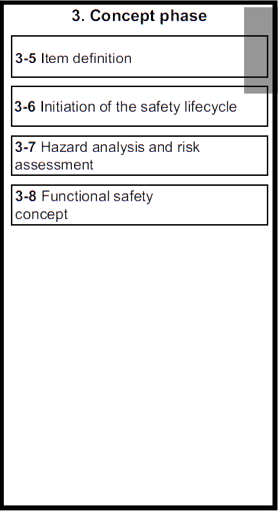3-7 Hazard Analysis and Risk Assessment
The Hazard Analysis and Risk Assessment, also called: HARA, is performed to identify and catagorise the hazards that malfunctions in the item could cause. The severity of the hazards will be expressed in an ASIL level A to D, ASIL D being the most severe. ASIL is an abbreviation for Automotive Safety Integrity Level, coming from the SIL levels used in IEC 61508, the industries' functional safety norm.
Important in this aspect is to know the distinct definition of a hazard, risk and malfunction. Please refer to the vocabulary for more info.
For each hazard found by the HARA a Safety Goal (SG) will be formulated in order to prevent or mitigate the hazardous event. The goal of this practice is to prevent "Unreasonable Risk". (see vocabulary)
Hint: add the Safety Goals as an additional column to the HARA, this prevents frequently switching documents and will speed up the process
Work Products:
- HARA
- Safety Goals (part of the HARA template)
- Verification review report of the HARA and Safety Goals
Downloads
- Click here to download the HARA example from "The Motion".
- Click here to download the Functional Safety Concept containing the Safety Goals of VSE". (To open this file you need Enterprise Architect lite)
- Click here to download the HARA from the Brace use-case
- Click here to download the HARA template

